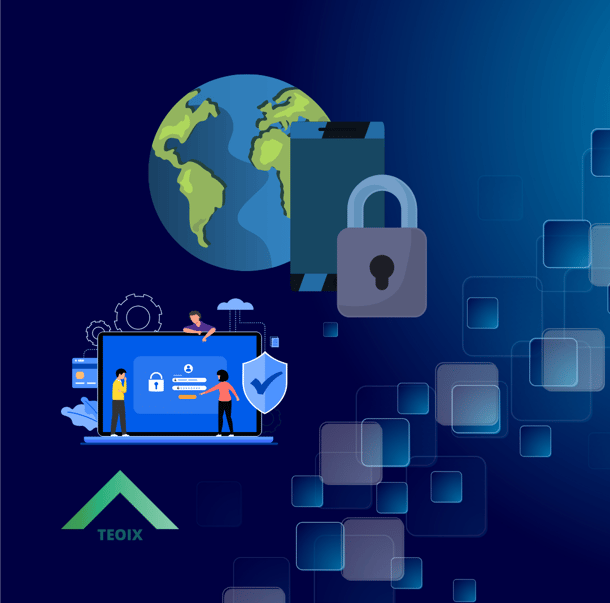What Technologies Help with Data Protection
SECURITY
5/24/20243 min read


In a time when cyberattacks and data breaches are becoming more common, safeguarding sensitive data has become essential for both individuals and enterprises. Robust data protection methods are critical as the volume and value of data continue to rise. These technologies guarantee the availability and integrity of data in addition to protecting it against corruption and unwanted access. The following are some essential technologies for data protection.
The use of encryption
The foundation of data protection is encryption. It entails transforming data into a coded format that only those with the proper decryption key can access or decode. Symmetric and asymmetric encryption are the two main varieties. Asymmetric encryption uses two keys—public and private—for the encryption and decryption operations, whereas symmetric encryption uses a single key for both. The encryption techniques known as Advanced Encryption Standard (AES) and Rivest-Shamir-Adleman (RSA) are commonly employed to guarantee the confidentiality of data both during transmission and storage.
Data Disguising
Data masking is a technique whereby changed content, such as characters, is used to conceal original data. In non-production settings, this method is crucial for safeguarding sensitive information including credit card details, social security numbers, and personal identity numbers. Organizations can make sure that the actual sensitive information is safe even in the event that it is exposed during testing or development by utilizing data masking. Two popular methods for protecting data are static data masking (SDM) and dynamic data masking (DDM).
Tokenization
Sensitive data is replaced through tokenization with distinct identifying symbols or tokens that preserve crucial data without jeopardizing security. Tokenization, as contrast to encryption, substitutes a non-sensitive data format for the original one without changing it. This approach is especially helpful in sectors where patient records and payment information security are critical, like finance and healthcare. Only approved systems are able to map tokens back to the original data, allowing the tokenized data to be safely preserved.
Verification with Multiple Factors (MFA)
By asking users to authenticate themselves using several different ways before gaining access to data, multi-factor authentication provides an extra degree of protection. Usually, this involves the user's knowledge (password), possessions (smartphone or security token), and identity (biometric verification, like fingerprints or facial recognition). MFA dramatically lowers the danger of unauthorized access because the extra layers operate as a barrier to data breaches, even in the event that one factor is compromised.
Prevention of Data Loss (DLP)
Technologies for data loss prevention monitor, identify, and block sensitive data while it is being used, moving, and at rest in order to identify and stop possible data breaches. DLP systems categorize and safeguard sensitive and important data using policies and regulations. They aid in preventing unauthorized users from exchanging data via cloud storage services, instant messaging, or email with other parties outside the company. This is especially helpful for making sure that data protection laws like GDPR and HIPAA are followed.
Intrusion Detection and Prevention Systems (IDPS)
Prevention and Detection of Intrusions Systems keep an eye out for malicious activity and policy infractions related to network and system operations. They are able to identify possible dangers and take appropriate action, such as preventing or lessening the threat. IDPS may operate on a host or a network. While host-based IDPS keep an eye on specific devices, network-based IDPS keep an eye on network traffic. These solutions are essential for seeing risks and taking action before they cause data breaches.
Blockchain Technology
Blockchain technology provides strong data protection with its decentralized and unchangeable ledger system. It was first created for cryptocurrencies. A timestamp, transaction information, and a cryptographic hash of the preceding block are all included in each block of a blockchain. This structure offers a high degree of data integrity and security since it is almost impossible to change the data without also changing the subsequent blocks. Blockchain technology is being investigated more and more for safe data verification and exchange in industries including supply chain management, healthcare, and finance.
Safe Backup Options
A vital component of data protection is routine backups. In the event of hardware failure, ransomware attacks, or inadvertent data deletion, secure backup systems guarantee the recovery of data. To protect data while it's in transit and at rest, modern backup systems frequently use encryption. Cloud-based backup solutions are also widely used by businesses because to their increased security features, scalability, and dependability.
Machine learning (ML) and artificial intelligence (AI)
Advanced data protection techniques are increasingly reliant on AI and ML technology. They have the capacity to examine enormous volumes of data in order to spot trends and abnormalities that might point to a security risk. Artificial intelligence (AI)-powered security solutions provide a dynamic protection against complex assaults by proactively identifying weaknesses and instantly responding to possible threats. With time, machine learning algorithms get more sophisticated, increasing their capacity to identify and counter new kinds of threats.
In summary
In today's digital world, data protection necessitates a multifaceted strategy utilizing a range of technologies. A thorough data protection strategy must include encryption, data masking, tokenization, multi-factor authentication, intrusion detection and prevention systems, blockchain technology, safe backup options, data loss prevention, and AI and ML. Organizations can greatly improve their capacity to safeguard secret information by combining these technologies, assuring data availability, confidentiality, and integrity in an ever-more complicated cyber environment.


